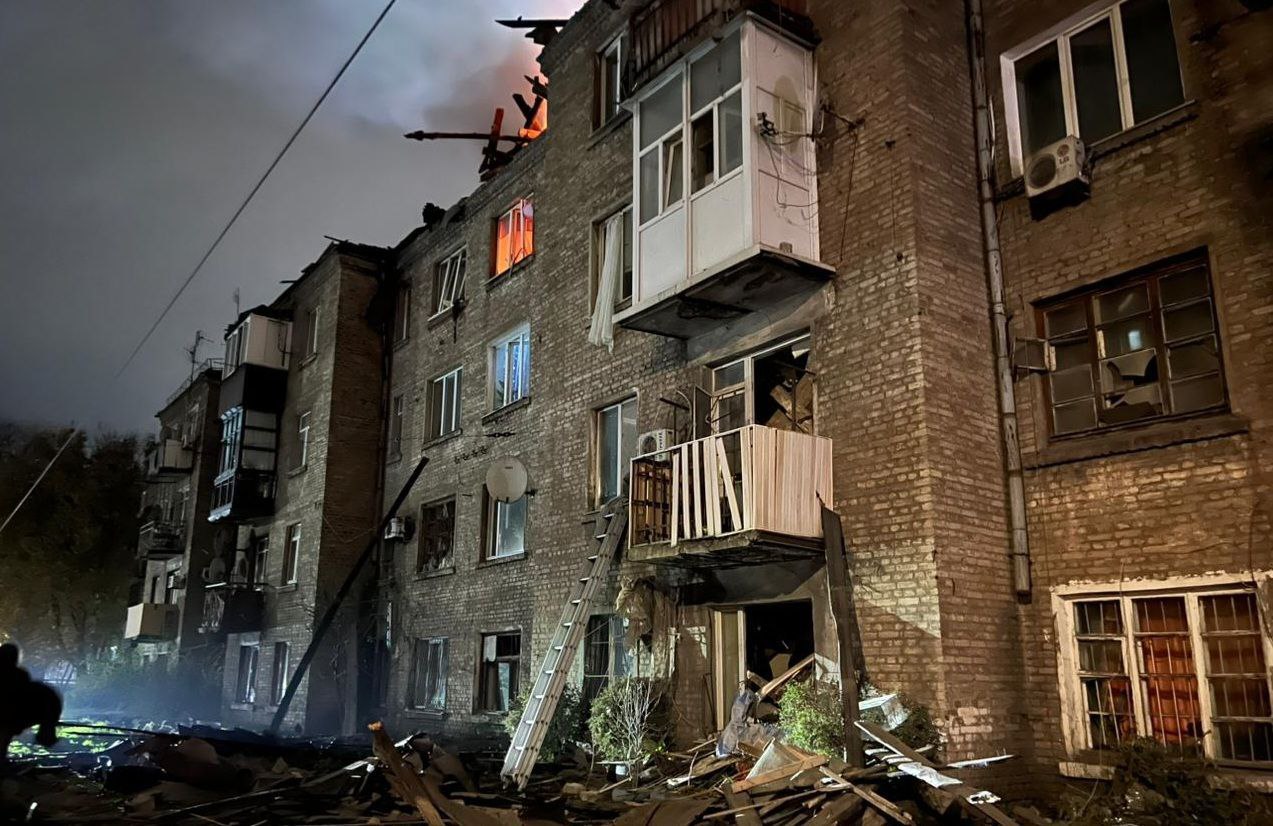By Illia Pavlenko, Major General, former Deputy Head of the Main Directorate of Intelligence of the Ministry of Defense of Ukraine
About the high-profile special operations of the Ukrainian military intelligence under the leadership of Lieutenant General Kyrylo Budanov amid the full-scale Russian invasion of Ukraine
From the very first days of the full-scale invasion, the Main Directorate of Intelligence of the Ministry of Defense of Ukraine (MDI) faced new unprecedented challenges that influenced the fundamental transformation of Ukraine as well as the course of global security, political, and economic processes. Reforms in Ukraine’s leading intelligence agency began essentially on the move. Since 2022, the scope and geography of the MDI’s activities have significantly expanded. Although Ukrainian intelligence officers had known their enemy well and fought against it since 2014, when Russia annexed Crimea and seized parts of eastern Ukraine (Donbas).
The experience of the MDI during the full-scale Russian invasion of Ukraine is actively studied by global analysts and specialists from many intelligence agencies.
Strikes on Military Targets and Infrastructure in Enemy Territory
In 2022, in several comments and interviews, Budanov formulated another military strategic priority — to strike the enemy on its own territory and shift the burden of war onto the aggressor state. Accordingly, one of the key tasks for Ukrainian intelligence became the destruction of enemy long-range aviation, which posed the greatest threat to Ukraine’s civilian population.
On February 26, 2023, a successful drone attack disabled a Russian A-50 long-range radar aircraft at the Machulishchi military airfield near Minsk, Belarus. In August 2023, an intelligence group of the Main Directorate of Intelligence (MDI) under the command of Oleg Babiy (posthumously Hero of Ukraine) covertly traveled 600 km behind enemy lines and destroyed a Tu-22M3 bomber at the Soltsy airfield in Novgorod region, also disabling two other aircraft.
On January 14, 2024, a joint operation by the MDI and the Ukrainian Air Forces destroyed an A-50U long-range radar aircraft, killing the crew. The Il-22M airborne command post was also damaged. On April 19 of the same year, a Tu-22M3 strategic bomber was destroyed 308 km away from the missile launch point.
In March 2024, an offensive operation took place in Russia’s Kursk and Belgorod regions involving Russian volunteer forces from the Russian Volunteer Corps, the “Freedom of Russia” legion, and the Siberian Battalion. This operation, as well as a previous one in May 2023, served as reconnaissance for a larger offensive involving multiple brigades planned for August in the Kursk region.
In April 2024, Budanov outlined a new ambitious plan aimed at reducing Russian military potential, targeting military industry, airfields, command centers, depots, and logistic hubs across the aggressor country. On April 17, MDI fighters used drones to attack the 590th Separate Military Radio-Technical Node in Kovylkino (Mordovia, 680 km from the Ukrainian border), destroying the over-the-horizon radar 29B6 "Container." On April 24, MDI drones attacked the Novolipetsk Metallurgical Plant in Lipetsk.
On May 27, MDI drones attacked the "Voronezh M" over-the-horizon radar station in Orsk, Orenburg region (1800 km from Ukraine’s border).
On June 8, a multipurpose Su-57 fighter was hit at the Akhtubinsk airfield in Astrakhan region, with another aircraft of the same class damaged. This was the first historic instance of a Su-57 being hit. On August 16, MDI kamikaze drones struck the Savasleyka airfield, destroying three military planes including a MiG-31K/I, and heavily damaging five others.
On October 12, an enemy fuel and lubricant base was successfully hit in the temporarily occupied town of Rovenky, Luhansk region. On December 21, a warehouse holding parts for 400 Shahed-136 kamikaze drones worth $16 million burned down in the Alabuga economic zone in Tatarstan, Russia.
On January 31, 2025, a strike hit Lukoil-Volgogradneftepererabotka in Volgograd region, one of Russia’s ten largest oil refineries. On January 26, drones targeted facilities of the Ryazan Oil Refining Company, one of Russia’s top four monopolists and army suppliers.
Experts believe that accidents at Russian oil refineries are the most effective sanctions on Russian oil and petroleum exports. Analysts claim that the military goal of these refinery strikes is to divert Russian air defense and missile defense resources (such as Pantsir-S1 missile-gun complexes) from other frontline duties, as many refineries require protection.
The use of MDI drones has proven capable of striking targets up to 2,000 km deep inside the aggressor country at various military facilities. As a result, the concept of a "safe rear" no longer exists for the Russians.
In a 2024 interview with The Philadelphia Inquirer, the commander of Ukrainian military intelligence stated he is a "fan" of strikes on Russian territory using long-range drones and has supported such tactics since the war’s first days. "That’s why since spring 2022, we began conducting significant operations inside Russia and will continue as long as we have resources. Russia has started to feel this," Budanov said.
Ukrainian military intelligence drones continue methodically destroying high-value Russian air defense systems, depots, and military production facilities hundreds of kilometers from Ukraine’s border.
Operations in Africa
A successful example of the Main Directorate of Intelligence’s (MDI) asymmetric strategy is countering the Kremlin’s plans to take control of certain countries in Asia and Africa, exploiting their natural resources and wealth to boost its military power. Many war criminals who committed crimes against Ukraine’s civilian population are part of the private military company Wagner and the so-called African Corps. They are legitimate targets for Ukrainian special forces. Just retribution finds them in the Middle East and Africa.
Syria was not just a Kremlin-controlled country — it was a strategic and largest military-logistical hub for the Russian military contingent in Africa. Military aircraft flew from Russia to Khmeimim, from where mercenaries deployed further to Sudan, Libya, Mali, and the Central African Republic.
The change of power in Syria was a personal defeat for Putin, as huge funds and resources had been invested in Assad’s regime and the Russian military presence there. The operation to liberate Syria from the pro-Moscow regime was prepared for many months and brilliantly executed. In time, details will emerge about the gradual overthrow of Assad’s regime, in which many countries played a role, including MDI specialists.
The Kremlin views Africa as a promising market for selling its outdated products, especially after sanctions and restrictions were imposed on many global markets. Meanwhile, food and essential goods supplies are blocked to countries where Moscow has no military-political influence, condemning the local populations—already on the edge of survival—to hunger and suffering, fueling anti-government protests. Russia, through its proxy forces, supports and helps establish dictatorial regimes in West Africa (Mali, Burkina Faso, Niger), strengthens anti-Western integration on the continent, and extracts resources from these countries.
Unlike Russia, Ukraine pursues no military-political goals in Africa. Ukraine’s main efforts in cooperation with African countries focus on humanitarian aid and economic collaboration. MDI activities in Africa aim to identify and counter Russian war crimes committed there, specifically by the Wagner PMC and the so-called African Corps.
In 2025, Budanov explained in an interview that partners did not provide assistance to Ukraine regarding MDI operations in Syria and Mali, so Ukrainian intelligence had to act independently. Although the presence of MDI special forces in Syria and Mali remains politically sensitive, it is known that cooperation occurred with local insurgent groups, and several operations were jointly planned against Russian proxies supporting pro-Kremlin regimes.
Issue of Prisoners of War
A separate chapter of MDI’s work is the liberation of Ukrainian defenders and civilians, primarily through prisoner exchanges involving Russian captors. For this purpose, President Volodymyr Zelensky tasked Budanov with creating an interagency Coordination Headquarters for handling prisoners of war, which he has headed since May 31, 2022.
Since the full-scale invasion began, the Coordination Headquarters has facilitated the return of 5,757 military personnel and civilians from Russian captivity through exchanges and special measures, as well as the repatriation of 9,744 bodies of the deceased (these efforts are ongoing, so the number is not final).
In its work with Russian prisoners and mercenaries, MDI and Ukraine strictly and consistently adhere to the Geneva Conventions, unlike the Russian side, which tortures Ukrainian prisoners, both military and civilian, turning their lives into hell.
The latest significant action by the Coordination Headquarters — on February 14, 2025, following another repatriation effort, the bodies of 757 heroically fallen Ukrainian soldiers were successfully returned to Ukraine.
Symbolism
The owl, a symbol of wisdom and decisiveness, is a key element of the MDI emblem. This bird hunts at twilight, when its prey loses vigilance and cannot see the deadly danger. Unpredictability and surprise are the main recipes for the success of Ukrainian military intelligence. Today, MDI is one of the most influential special services on the European continent, and the intensity and multifunctionality of Ukrainian intelligence special operations is a rich story of success still waiting to be fully explored.
Meanwhile, the fight continues, as does the planning and execution of new bold initiatives. The Ukrainian owl never stops hunting.




















